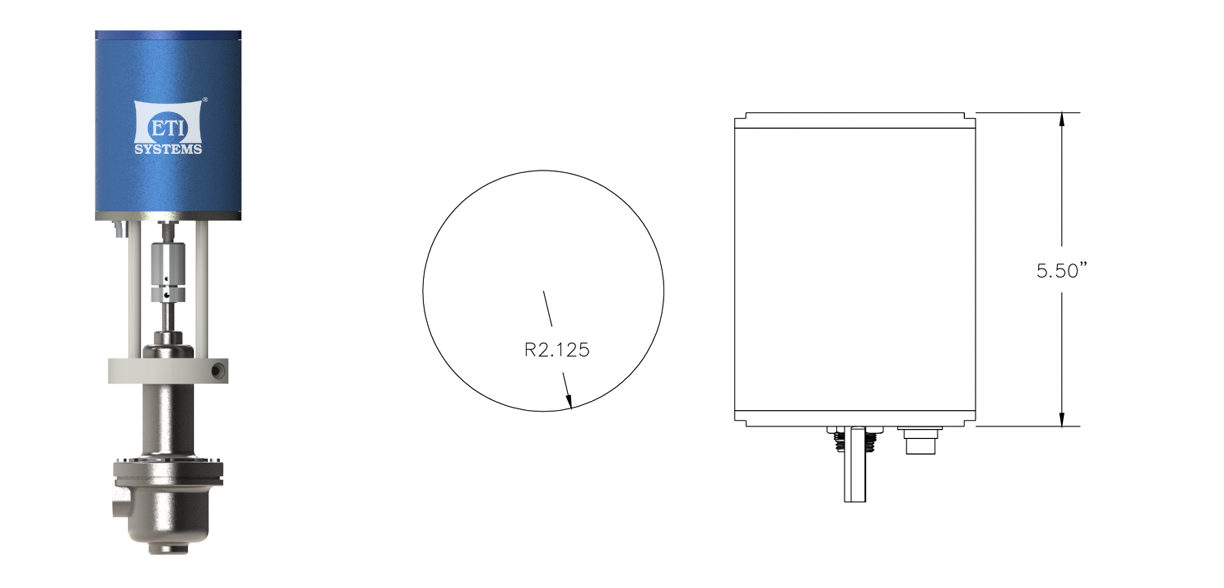Linear Potentiometers: Unlocking Precision Measurement and Control
Are you tired of settling for approximate measurements and limited control? Look no further! In today’s fast-paced world, precision is key, especially when it comes to measurement and control systems. That’s where linear potentiometers step in, offering unparalleled accuracy and versatility. Whether you’re an engineer seeking precise data or a hobbyist craving better control over your projects, this blog post will unlock the endless possibilities that linear potentiometers bring to the table. Get ready to delve into a world brimming with precision measurement and unrivaled control capabilities – let’s explore the fascinating realm of linear potentiometers together!
Introduction to Linear Potentiometers
A linear potentiometer is a transducer that converts the position of a slider or wiper into an electrical signal. The potentiometer consists of a resistive element, typically a strip of conductive material, and a wiper that slides along the surface of the resistive element to create variable resistance.
Linear potentiometers are used in a wide variety of applications requiring precise measurement and control, such as motorized stage equipment, robotics, and medical devices. Potentiometers are also commonly used as volume controls on audio equipment.
Advantages of linear potentiometers over other types of position sensors include their high accuracy, repeatability, and resistance to shock and vibration. Additionally, linear potentiometers can be sealed against harsh environments.
Common applications for linear potentiometers include:
– Measuring the position of machine components
– Automotive throttle and pedalPosition sensing
– Audio level control
– Robotics
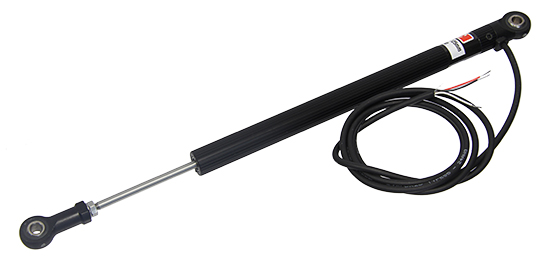
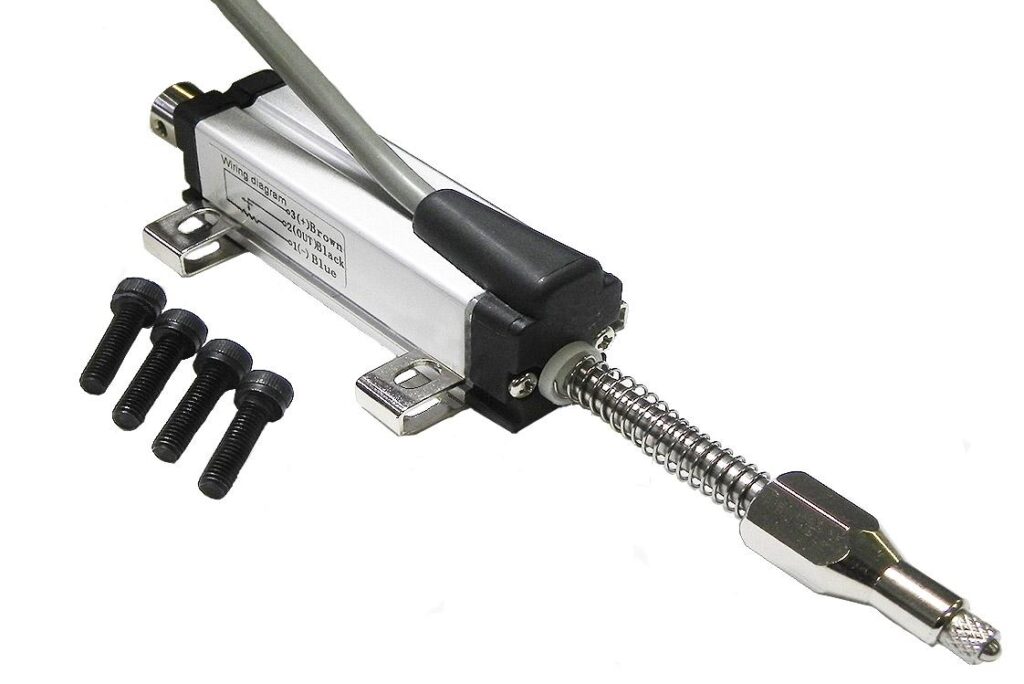
Advantages of Linear Potentiometers
Linear potentiometers offer many advantages over other types of potentiometers. They are more precise, have a wider range of measurement, and are less affected by temperature changes. Linear potentiometers are also easier to install and maintain.
Linear potentiometers provide an accurate output and are capable of measuring very small changes in a signal or voltage. The linearity of these devices makes them useful for applications where precise measurements must be taken. They can also be used to measure the position of a control knob, allowing for more accurate control over a device.
Linear potentiometers have a wide range of measurement compared to other types of potentiometers. This allows them to accurately measure over a range instead of just one specific point. This is especially useful when measuring different parts of a system.
Finally, linear potentiometers are less affected by temperature changes than most other types of potentiometers. This means that they will still provide accurate readings even in extreme temperatures, which is important for applications that operate in high-temperature environments, such as automotive engines.
Overall, linear potentiometers are a good choice for applications that require precise measurements and readings that are not affected by temperature changes. They are also easier to install and maintain than other types of potentiometers.
Types of Linear Potentiometers
There are two main types of linear potentiometers: conductive plastic and wirewound. Each type has its own advantages and disadvantages that make it suited for different applications.
Conductive plastic potentiometers are made from a resistive element sandwiched between two layers of conductive plastic. This construction makes them very rugged and resistant to shock and vibration. They also have good electrical stability, meaning they won’t drift over time like other types of potentiometers. However, conductive plastic potentiometers are limited in their power handling capability and can only be used up to a few watts.
Wirewound potentiometers are made from a resistive element wound around a central core. This construction gives them much higher power handling capability than conductive plastic potentiometers, making them suitable for high-power applications. Wirewound potentiometers also have good electrical stability and resistance to shock and vibration. However, they are more expensive than conductive plastic potentiometers and can be more difficult to mount due to their larger size.
Both types of linear potentiometers have their advantages and disadvantages, so it’s important to choose the right type for your specific application.
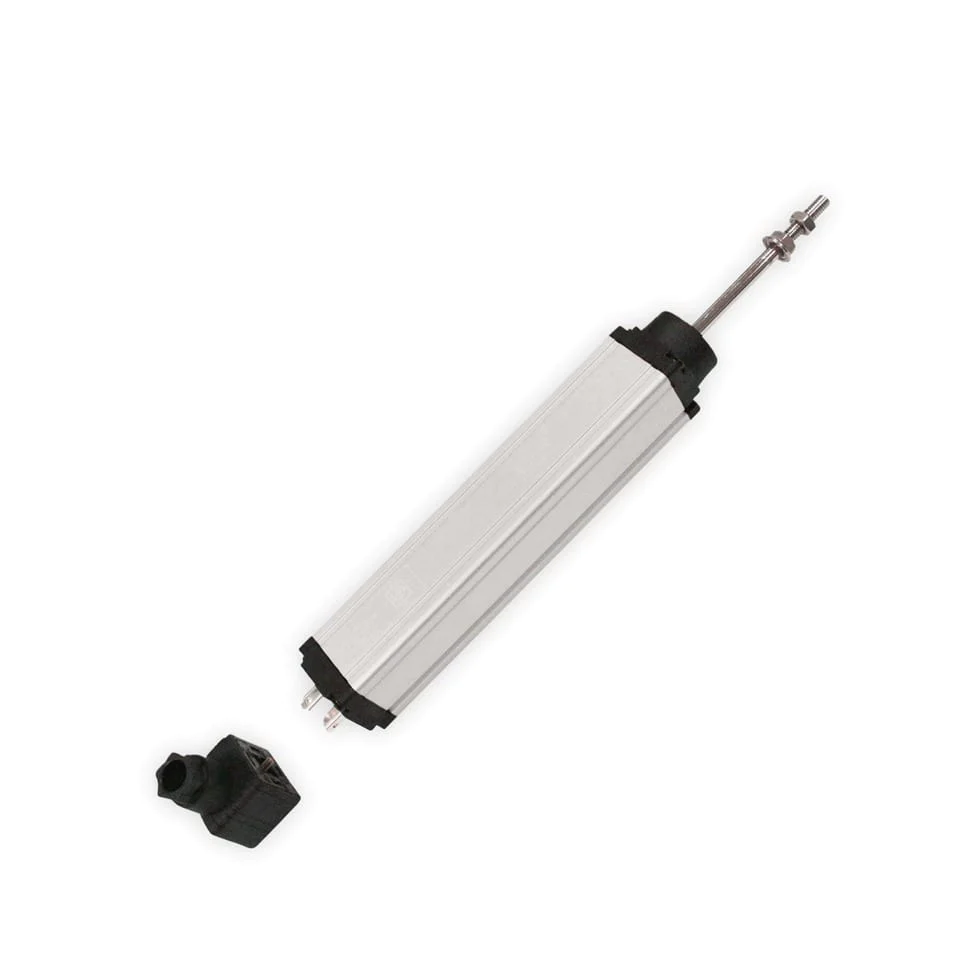

Applications of Linear Potentiometers
Linear potentiometers are used in a wide variety of applications where precise measurement and control is required. They are commonly used in industrial applications such as factory automation, process control, and quality assurance. Additionally, linear potentiometers are often used in medical devices and laboratory equipment.
Linear potentiometers offer many advantages over other types of sensors, including high accuracy, repeatability, and low hysteresis. Additionally, linear potentiometers are rugged and durable, making them ideal for use in harsh environments.
Linear potentiometers can also be used in home automation and entertainment systems, such as gaming consoles, remote controlled cars, and robots. They can be used to detect the position of objects or to measure motion. Linear potentiometers are also commonly used in musical instruments such as guitars and pianos to control volume and other parameters.
In summary, linear potentiometers are used in a wide variety of applications where precise measurement and control is required. They offer high accuracy, repeatability, and low hysteresis, making them ideal for industrial, medical, laboratory, home automation, and entertainment applications.
Selecting a Linear Potentiometer
There are many factors to consider when selecting a linear potentiometer for your application. The three most important factors are resistance, voltage, and travel.
Resistance is the measure of how much the potentiometer will resist the flow of current. The higher the resistance, the less current will flow through the potentiometer. Voltage is the measure of how much electrical potential difference exists between two points. The higher the voltage, the more potential there is for current to flow through the potentiometer. Travel is the measure of how far the wiper arm travels from one end of the resistive element to the other. The longer the travel, the more accurate the measurement will be.
When selecting a linear potentiometer, you must first determine what your application requires in terms of resistance, voltage, and travel. Once you have determined these requirements, you can then select a potentiometer that meets those needs.
To ensure the best performance for your application, it is important to select a linear potentiometer with the highest tolerance rating possible. Higher tolerance ratings will result in more accurate measurements and more reliable performance.
Finally, it is important to select a linear potentiometer that is designed for the environment in which it will be used. This includes making sure the potentiometer is rated for extreme temperatures, dust, water, or other environmental hazards.
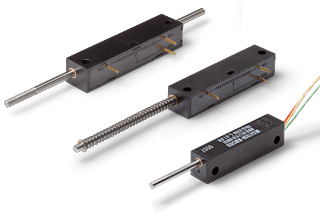
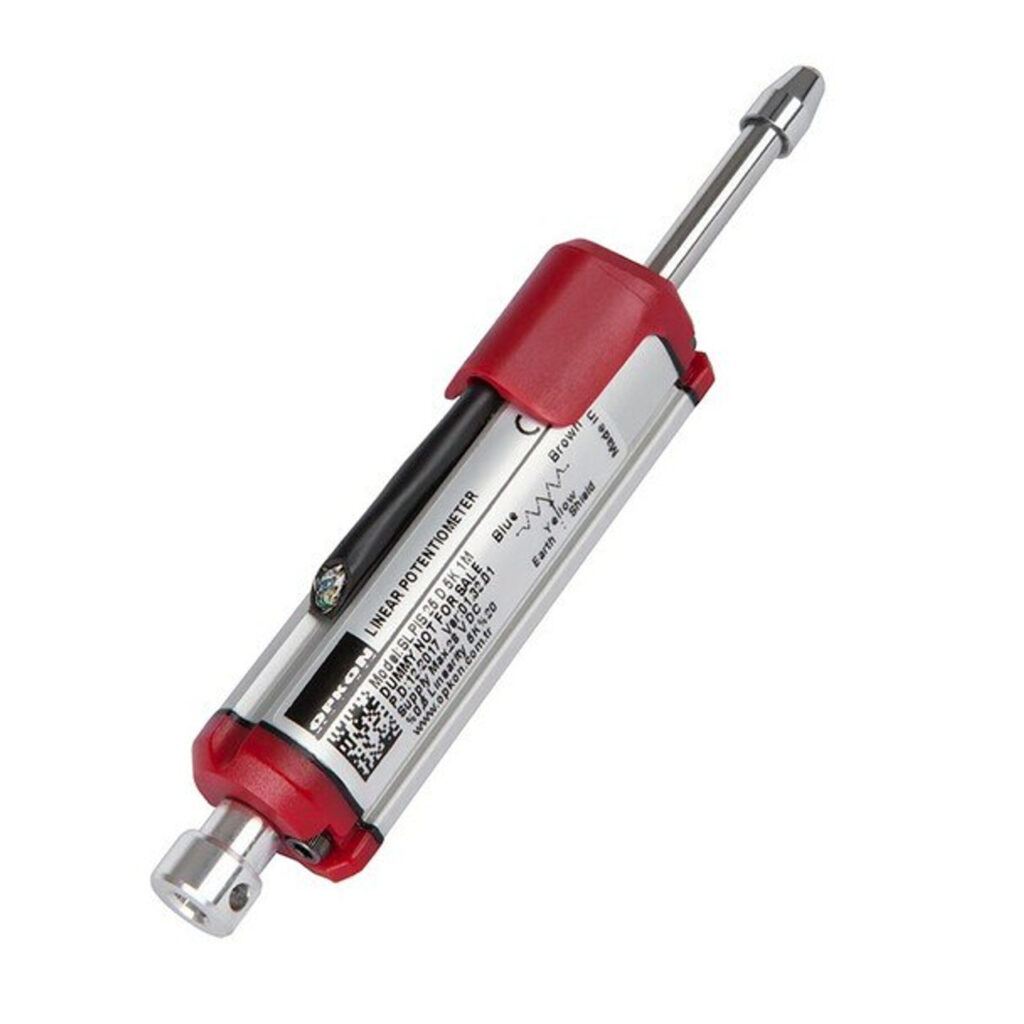
Troubleshooting Common Issues with Linear Potentiometers
Linear potentiometers are an essential tool when it comes to precision measurement and control. They offer accurate, repeatable measurements, as well as efficient performance in a wide variety of applications. With their versatile design and easy-to-use construction, linear potentiometers can help you unlock the potential of your projects with confidence. Whether you’re looking for motion sensing or voltage monitoring, they’ll provide the precision that you need to maximize results and minimize errors – so get ready to unlock your project’s full potential!
Conclusion
Hall Effect Joysticks provide gamers with a more precise control than traditional joysticks, and their potential uses extend far beyond the gaming world. From robotics to automation, Hall Effect Joysticks have become an invaluable asset in many industries as they allow for improved accuracy and reliability when controlling machines or robots. With its growing popularity in both consumer and commercial applications, the Hall Effect Joystick is sure to be around for years to come.
Our Products
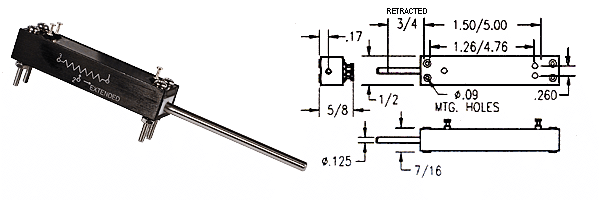
Conductive Plastic Element Black Anodized Aluminum Body, Stainless Steel Shaft, Gold Plated Terminals Recommended for Test and Lab Equipment, Industrial Applications, Medical Equipment (non-life support) Life Expectancy: 20 million strokes Resistance Tolerance: 20% standard (10% Available) Linearity Tolerance: .5% to 1.5% standard (0.3% to 1.0% Available) Power Rating: 0.2 to 1.2 Watt Electrical Stroke: 1″ […]
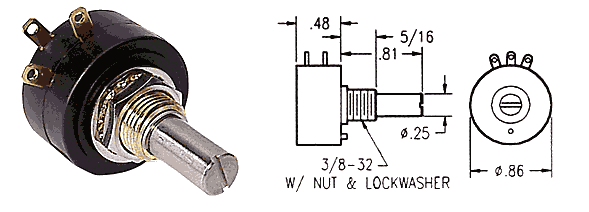
Conductive Plastic Element. Gold Plated Terminals. High Temp. Thermoplastic Housing. Stainless Steel Shaft. Recommended for Medical Equipment (non-life support), Robotics, Industrial, Test and Lab Equipment. Life Expectancy: 10 million turns Resistance Tolerance: ± 10% standard ( ± 10% available) Linearity Tolerance: ± 1.0% standard ( ± 0.5% available) Electrical Angle: 320º ± 5º Mechanical Angle: […]
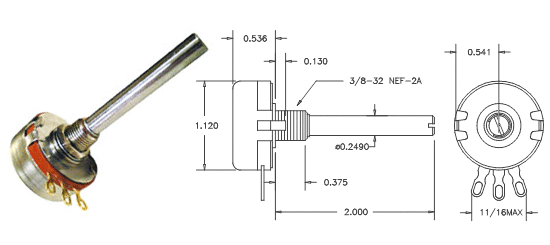
Hot molded carbon element Gold-plated terminals Stainless-steel shaft and housing Quality meeting or exceeding MIL-R-94 – QPL listed Rotational Life: 25,000 Resistance Tolerance: ± 10% or ± 20% Operating Temperature Range: -65°C to +125°C Power rating: 2 watts Insulation Resistance – dry: 10K Meg; wet: 100K Meg Dielectric Strength: 900 VRMS Starting Torque: 1 oz/in […]

Hot molded carbon element One piece housing and bushing Stainless-steel shaft Quality meeting or exceeding MIL-R-94 – QPL listed Rotational Life: 25,000 Resistance Tolerance: ± 10% or ± 20% Operating Temperature Range: -65°C to +125°C Power rating: 0.5 watts Insulation Resistance – dry: 10K Meg; wet: 100K Meg Dielectric Strength: 750 VRMS Operating Torque: 0.5 […]

MG22 Concentric Turns Counting Dial Counts up to 20 turns. One Piece Mounting. Aluminum Housing. Black Nylon Knob. Numbers are White on Black Background. Over the Center Lock Available. Diameter – 7/8″; Extension from Panel – 1.0″ Maximum Panel Thickness – 1/4″ Weight: .2 oz
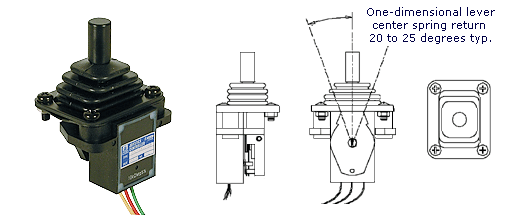
Electrical Specifications: 10K ohm precision potentiometer Single axis joystick Cylindrical knob Linearity (independent): ± 5.0% Lever Electrical Angle: 40° Max. Resolution: Essentially Infinite Mechanical Specifications: ± 20° from center deflection angle Life expectancy: 5 million operations Spring return to center Housing material: High temp. thermoplastic IP65 Rating
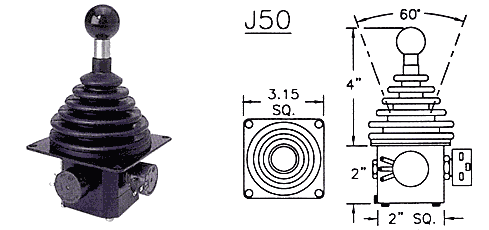
Two axis joystick 4″ handle height 60° deflection angle ( ± 30°) Ball knob Spring return to center Circular deflection pattern 10K ohm precision potentiometer Protective rubber boot (IP54 rating above panel) IP65 option available upon special request Panel mounting bracket

Multi-axis joystick 8.34″ handle height 45° deflection angle ( ± 22.5°) Spring return to center Cobra Head handle Circular deflection pattern 10K ohm precision potentiometers – all axis Three momentary switches (two illuminated, one trigger) Panel mounting bracket Protective rubber boot (IP65 rating above panel)
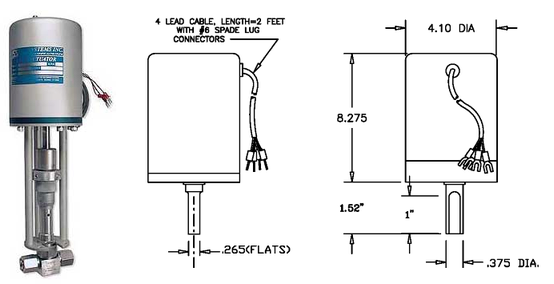
Input: 4 to 20 mA (200 ohms) or 0 to 10VDC (18KΩ) Rotation Speed : 1.5, 3, 5, 10, 20 or 40 RPM Power : 24 VDC (50 Watts min.) Dynamic Braking : Installed Limit Switches : Installed Torque Limiter : Set for Valve requirements. Wt : Approx. 21 in/lbs. max. Seating Limiter : Set […]
